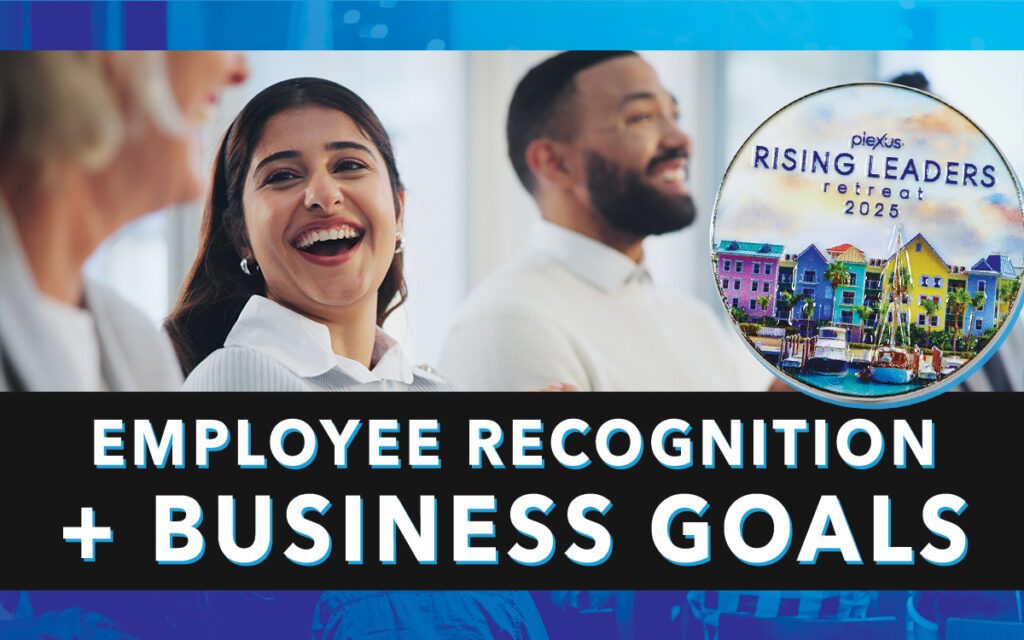How to Align Employee Recognition with Your Business Goals in the Year Ahead
February 13th, 2025
Employee recognition is a powerful tool for boosting morale, increasing motivation, and improving overall performance. However, to maximize its impact, recognition should be aligned with your organization’s business goals. When employees see a direct link between their contributions and the success of the business, it strengthens their sense of purpose and engagement. We believe that aligning employee recognition with business goals is not only essential for building a positive work culture, but also for driving measurable business outcomes. SymbolArts can teach you how to strategically align employee recognition with your business objectives in the year ahead.
Step 1: Define Clear Business Goals
Before you can align employee recognition with your business goals, it’s crucial to clearly define those goals. Whether it’s increasing sales, enhancing customer satisfaction, improving operational efficiency, or expanding your market reach, you need to identify what the organization aims to achieve in the coming year. Clear, measurable business goals will serve as a foundation for crafting a recognition program that celebrates the actions and achievements that support these objectives.
Step 2: Identify Key Behaviors That Drive Business Success
To align recognition with business goals, identify the behaviors, actions, and values that directly contribute to achieving those goals. For example:
• Sales Targets: Recognize top performers or sales teams who exceed targets or close high-value deals.
• Customer Service Excellence: Reward employees who receive exceptional feedback from clients or go above and beyond in providing customer support.
• Innovation and Efficiency: Celebrate employees who contribute to streamlining processes or develop creative solutions that improve operational efficiency.
By focusing on the specific behaviors that move the needle on your business goals, you can ensure that your recognition program is not only relevant but impactful.
Step 3: Make Recognition Timely and Specific
Aligning employee recognition with business goals requires timely and specific feedback. It’s important to acknowledge and reward employees as soon as they achieve or contribute to a business goal. Whether it’s completing a successful project, reaching a performance milestone, or contributing to a team win, immediate recognition reinforces the connection between the individual’s effort and the organization’s objectives.
Step 4: Customize Recognition to Reflect Business Values
The recognition you provide should reflect your organization’s core values and mission. If one of your business goals is to enhance customer satisfaction, recognize employees who demonstrate exceptional customer service skills or innovative solutions that improve client relationships. Similarly, if collaboration is a key part of your strategy, acknowledge employees who work well across teams or departments to achieve collective goals. This approach ensures that your recognition program is not only motivating but also reinforces the behaviors that drive your company’s success.
Step 5: Use Recognition to Foster a Results-Oriented Culture
Employee recognition should be used as a tool to reinforce a results-oriented culture. Reward employees not just for effort, but for achieving tangible outcomes that move the organization closer to its business goals. For instance, if your company is focused on increasing sales, highlight achievements such as reaching quarterly sales targets, securing new clients, or generating repeat business. You can further amplify this recognition by offering performance-based rewards like custom awards, bonuses, or public acknowledgment in meetings or newsletters.
Step 6: Align Recognition with Career Growth Opportunities
Linking recognition to career development is a powerful way to engage employees and align their efforts with business goals. When employees are recognized for achieving business-related objectives, it should come with opportunities for growth, such as promotions, professional development, or leadership roles in new projects. This connection not only motivates employees to strive for business success but also helps them see the long-term benefits of contributing to the company’s goals.
Step 7: Ensure Leadership Involvement in the Recognition Process
To ensure employee recognition aligns with business goals, it’s crucial for leadership to be actively involved in the process. Senior leaders should communicate the company’s goals clearly and highlight the importance of employee contributions to achieving those goals. Recognizing employees during team meetings, company-wide events, or through personal thank-you notes from leaders sends a powerful message about the value the organization places on individual and team efforts.
Step 8: Measure the Impact of Recognition Programs
Once you’ve aligned recognition with business goals, it’s important to track and measure its effectiveness. Evaluate whether the recognition efforts are driving the desired behaviors and contributing to business success. You can use employee surveys, performance metrics, and business KPIs (Key Performance Indicators) to assess whether employees feel valued and whether the recognition program is driving motivation and engagement. Regularly reviewing and adjusting your recognition strategy will ensure that it continues to support your evolving business objectives.
Conclusion:
SymbolArts understands that employee recognition utilizing your business goals is a powerful way to drive success, improve morale, and foster a culture of excellence. By defining clear business goals, recognizing the right behaviors, and offering timely, specific, and meaningful recognition, you can inspire employees to work toward shared objectives and contribute to the company’s growth. We believe that a strategic approach to employee recognition can make a significant impact on both individual performance and overall business success. Plan your recognition initiatives thoughtfully, and watch as your workforce becomes more engaged, motivated, and aligned with your company’s goals in the year ahead.
